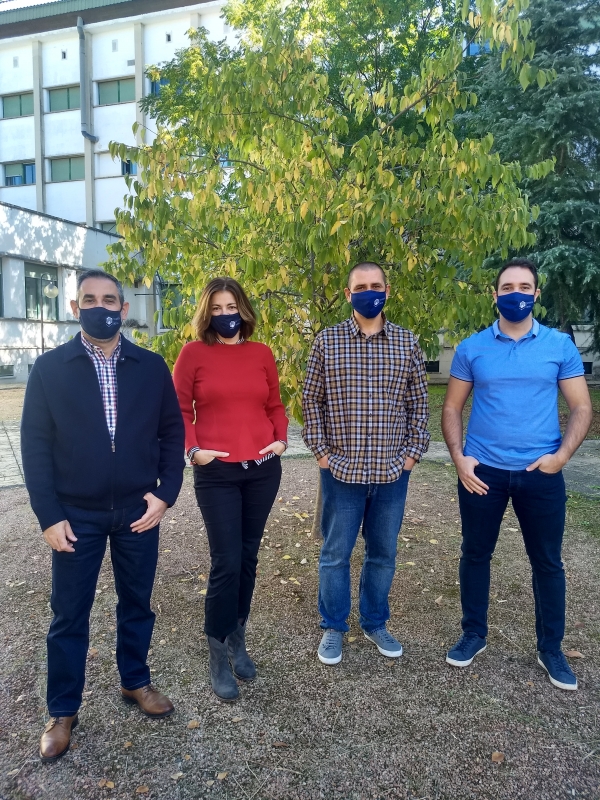Solar radiation, rain, humidity and extreme temperatures. Cultural heritage is exposed to an array of external factors that deteriorate it over time. Among them, the most aggressive may well be microbial contamination, caused by an ample ecosystem of fungi, algae, bacteria and microscopic lichens that grow inside the pores of the materials the buildings are made of and they make these buildings less resistant to other external agents, speeding up the deterioration process over time.
When restoring historical monuments, it is important to use tough materials that can withstand these microorganisms. This task is complex, given that the materials used in these kinds of restorations must be in accordance with the original materials, made of plaster, lime mortar and stones such as limestone or marble. Cement and concrete, materials commonly used in the latest research, are ruled out as they are incompatible with materials such as lime mortar and could even worsen the problem.
A research team from the University Research Institute into Fine Chemistry and Nanochemistry at the University of Cordoba (the FQM 214 and FQM 175 groups) and Seville's Institute of Natural Resources and Agrobiology of the Spanish National Research Council (abbreviated to IRNAS-CSIC in Spanish) worked together to create a biocide additive, as in one that kills microorganisms, that can be incorporated into materials used to rebuild historic monuments and buildings.
"The materials that contain these kinds of chemical compounds are widely used in restoration but their effectiveness usually lasts for a brief amount of time -about two years - since the external agents, in addition to deteriorating the material, end up weakening its biocidal properties", explains Adrián Pastor, one of the researchers on the study which is part of his doctoral research for his thesis titled "New functional materials to decontaminate cultural heritage and urban habitats". The study has been performed under the guidance of Dr. Luis Sánchez and Dr. Ivana Pavlovic and with the participation of Dr. Manuel Cruz Yusta and Dr. Beatriz Gámiz (RNM 124).
In this research, the team tested hydraulic lime mortar to which they added carbendazim, a biocide compound generally widely used in paint, as it has low water solubility and is therefore more water resistant. In order to do so, they compared, on the one hand, the antimicrobial effectiveness of a lime mortar to which carbendazim was directly added and on the other hand, a lime mortar whose clay contained an anchored biocidal compound.
Both underwent several microbiological tests in order to test their ability to fight microorganisms and a leaching process, in which the soluble parts of a material are removed, simulating various rain cycles in a short amount of time.
"In the first microbiological test, we verified that the first mortar, to which we directly added carbendazim, had a somewhat greater biocidal capacity. However, after the leaching processes, we verified that the second mortar, that had carbendazim anchored to the clay, showed better results since the biocide compound was released more slowly and therefore, its effect is more long-lasting", explains Adrián Pastor.
This is a preliminary study that requires further research to get this material under study on the market, meaning a larger scale study, as well as studying the material's specific physical properties in order to verify that it complies with regulations regarding durability, adhesion and other properties.
This study is part of the MATERPAT Project- "New functional materials based on encapsulation techniques for the prevention, conservation and restoration of cultural heritage" (RTC-2015-3916-6), funded by the Ministry of Economic and Business Affairs.
Adrián Pastor, Beatriz Gámiz, Manuel Cruz-Yusta, Luis Sánchez, Ivana Pavlovic. "Carbendazim-clay complexes for its potential use as antimicrobial additives in mortars" Building and Environment. DOI: /10.1016/j.buildenv.2020.107214


